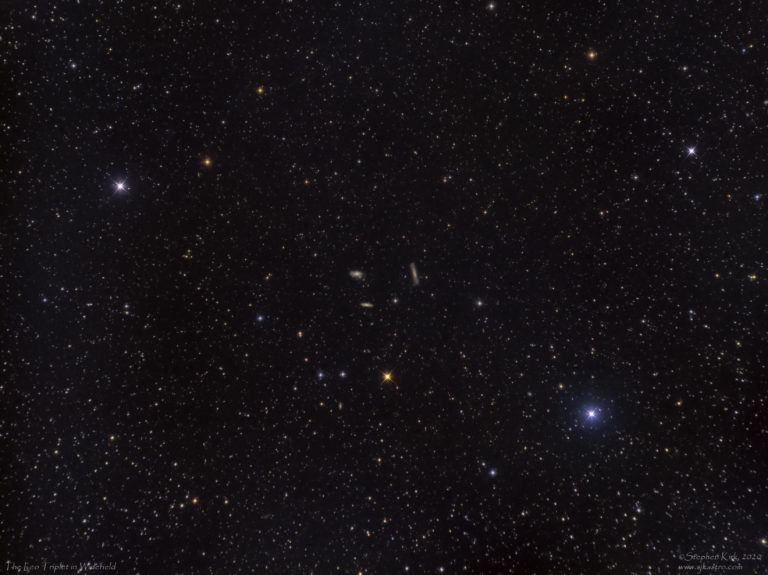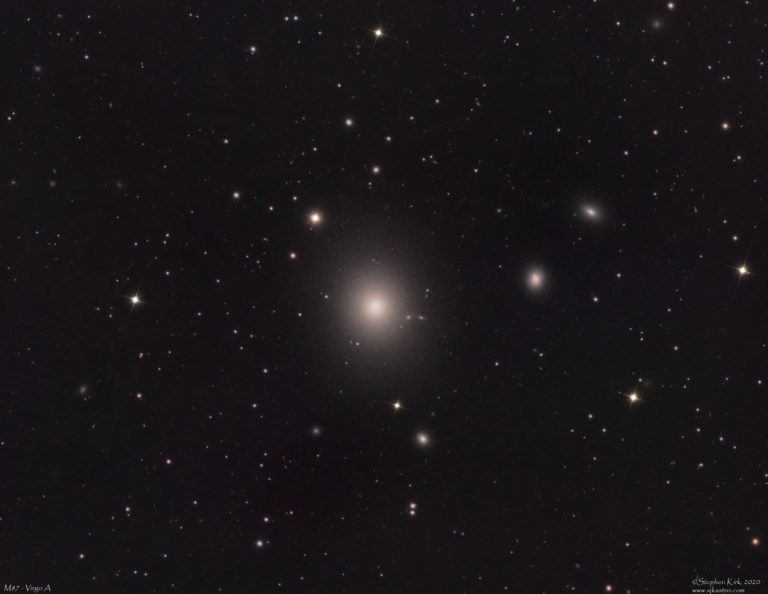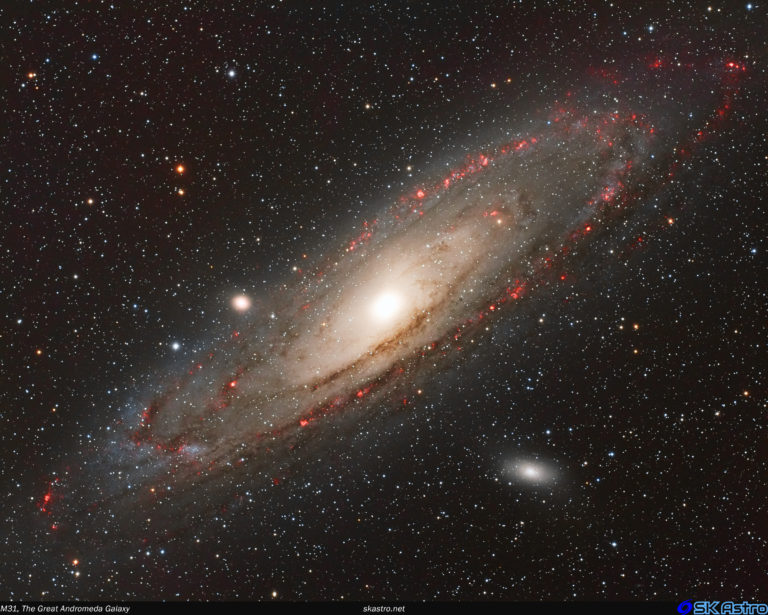The Leo Triplet is a popular trio of galaxies in the constellation of Leo, popular with amateur and professional astronomers alike. They are visible in the late winter and spring in the Northern Hemisphere. Consisting of M65, M66 and NGC 3628, the galaxies are about 35 million light years away. NGC 3628 was never given the distinction of as Messier number for some reason, even though it is as bright as the other two members. The image was taken with my Samyang 135mm DLSR lens coupled with Moravian G2-8300 cooled CCD camera with Astrodon RGB filters. It consists of seventy minutes (5 minute exposures binned 1×1) in each of the red, green and blue filters to give a total integration time of three hours and thirty minutes. The triplet was about 45 degrees above the horizon when the exposures were captured. IT was then processed with Pixinsight and Photoshop. The…
M87 M87 is a supergiant elliptical galaxy at the heart of the Virgo cluster of galaxies and is visible in many pictures of the famous Markarian’s Chain. It is about 65 million light years away and, after the Sun, is the brightest source of radio waves in the sky – at that vast distance! The galaxy is one of the most massive in the local universe at two hundred times the mass of our own Milky Way galaxy. M87 harbours one of the most massive Black holes in the Universe at 8 billion solar masses. The galaxy is surrounded by a swarm of globular clusters, about 12000 of them, compared to only 200 from our galaxy. The galaxy is so large that from The Earth the extended galaxy is almost the size of the full moon. Image Technical Data Imaged from by back yard in Nottingham, UK with my TEC…
Known since ancient times as a nebulous blob in the autumn and winter sky, M31 was the first galaxy to be recognised as a completely independent “island universe”, wholly separate from our own Milky Way galaxy. This nature of M31 was only discovered in 1924.M31 is slightly larger than our own galaxy and is located about 2.2million light years away. M31 – The Great Andromeda Galaxy The abovr image is comprised of a series of 600s exposures taken during 2017 and 2018 and is approximately ten hours worth of data through Baader LRGB and Ha (7nm) filters with a Takahashi FSQ85 telescope at native focal length and with G2-8300 camera. M31 Annotated Version M31 Inverted Version



